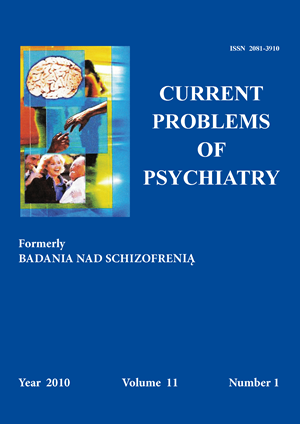Age and severity of Internet addiction as shown by lower and upper secondary school students
Keywords:
Internet addiction, age, adolescentsAbstract
Internet addiction was defined for the first time by Young as a habit and impulse disorder which does not cause physical intoxication, but which deteriorates significantly the functioning of an individual in the social, professional and family sphere.
The aim of the study was to answer the following research problem: do any differences occur, if any, between lower secondary school students and upper secondary school students in terms of Internet addiction symptoms measured by the Internet Addiction test and within which addiction symptoms do these differences occur?
The examined group: The research consisted of 175 lower secondary school students and 356 upper secondary school students (238 boys and 293 girls) aged 13-19 years. 98 boys and 77 girls attended lower secondary school, whereas upper secondary school was attended by 131 boys and 212 girls.
Methods: In the research the Questionnaire by Potembska was used [15] and the Internet Addiction Test designed by Young.
Results: Based on the statistical analyses carried out statistically significant differences were found between upper and lower secondary school students as regards the severity of the Internet addiction symptoms.
Conclusions
- Lower secondary school students are characterised by a greater severity of the Internet addiction symptoms as compared to upper secondary school students.
- Lower secondary school male students belong to the group that is at risk of Internet addiction.
- The older the examined adolescents, the less severe Internet addiction symptoms they show.
References
1. Young K.S. Internet addiction: The emergence of a new clinical disorder. Cyberpsychol. Behav., 1996; 1: 237-244.
2. Young K.S. Caught in the net. New York: John Wiley & Sons; 1998.
3. Milani L., Osualdella D., Di Blasio P. Quality of Interpersonal Relationships and Problematic Internet Use in Adolescence. Cyberpsychol Behav., 2009; 12(6): 681-684.
4. Lam L.T., Peng Z.W., Mai J.C., Jing J. Factors associated with Internet addiction among adolescents. Cyberpsychol. Behav., 2009;12: 551-555.
5. Davis R.A., A cognitive-behavioral model of pathological Internet use. Comput. Human Behav, 2001; 17: 187-195.
6. Shapira N.A., Lessig M.C., Goldsmith T.D., Szabo S.T., Lazoritz M., Gold M.S., Stein D.J. Problematic internet use: proposed classification and diagnostic criteria. Depress Anxiety. 2003; 17(4): 207-16.
7. Young K.S. Internet addiction: symptoms, evaluation, and treatment. In: Vandencreek L., Jackson T.L. eds., Innovation in clinical practice. Sarasota, FL: Professional Resource Exchange, 1999.
8. Siomos K.E., Dafouli E.D., Braimiotis D.A., Mouzas O.D., Angelopoulos N.V. Internet addiction among Greek adolescent students. Cyberpsychol. Behav., 2008; 11(6): 653-657.
9. Johansson A., Gotestam K. Internet addiction: characteristics of a questionnaire and prevalence in Norwegian youth (12-18 years). Scand. J. Psych., 2004; 45: 223-229.
10. Bakken I.J., Wenzel H.G., Götestam K.G., Johansson A., Oren A. Internet addiction among Norwegian adults: a stratified probability sample study. Scand. J. Psychol., 2009; 50: 121-127.
11. Pallanti S., Bernardi S., Quercioli L. The Sorter PROMIS questionnaire and the Internet Addiction Scale in the assessment of multiple addictions in a high school population: prevalence and related disability. CNS Spectrums, 2006; 11: 966-974.
12. Liu T., Potenza M.N. Problematic Internet use: clinical implications. CNS Spectrums, 2007; 12: 453-466.
13. Korea National Statistics. Korean Statistics Yearbook. Seoul, Korea: Korean National Statistics; 2005.
14. Yen C.F., Ko C.H., Yen J.Y., Chang Y.P., Cheng C.P. Multidimensional discriminative factors for Internet addiction among adolescents regarding gender and age. Psychiatry Clin. Neurosci., 2009; 63(3): 357-364.
15. Pawłowska B., Potembska E. Właściwości psychometryczne Kwestionariusza do Badania Uzależnienia od Internetu (KBUI). Badania nad Schizofrenią, 2009; X, 10: 310-321.


